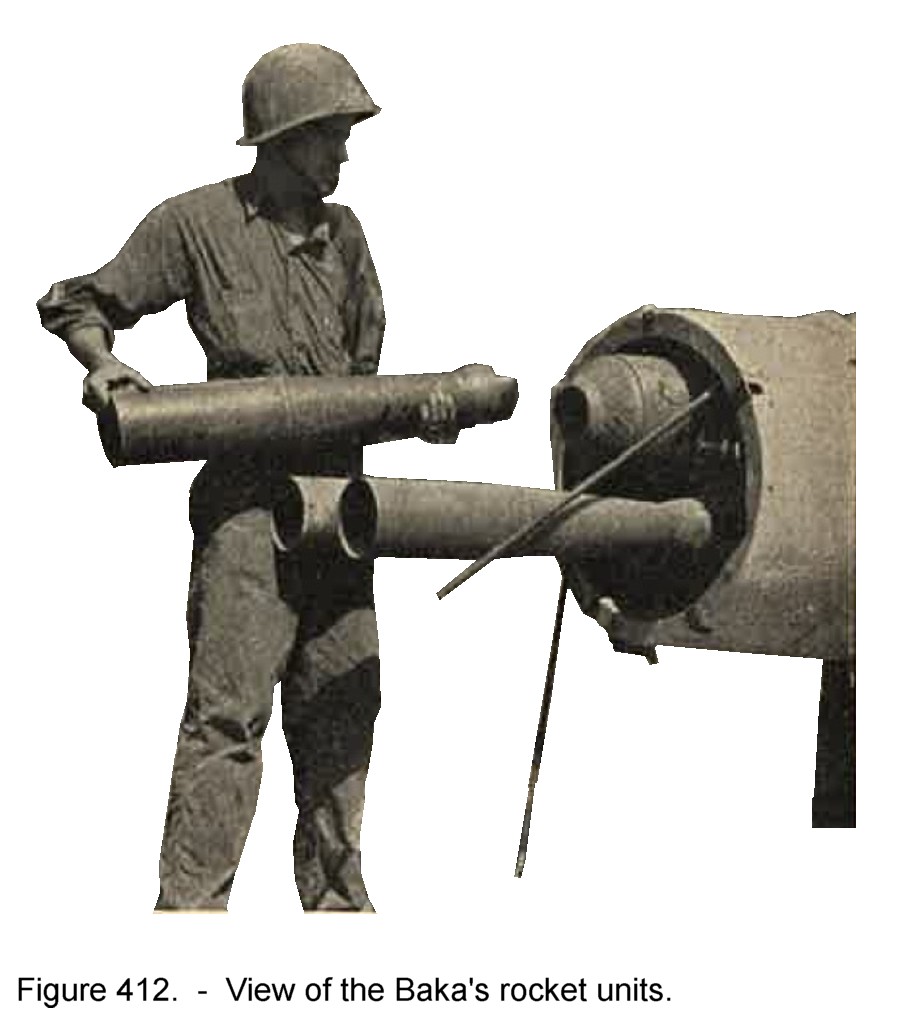CHAPTER 9 - WWII JAPANESE MISSILES

SECTION IX - WWII JAPANESE GUIDED MISSILES.
1. GENERAL.
a. Trends. The Japanese are begining to use rocket weapons in a large scale and have recently introduced their first guided missile. Since there are indications that further development in this class of weapon is to be expected, the following definitiona are included by way of explanation and for future guidance.
b. Guided missiles. A guided missile is one which;
(1) Like an artilery projectile, is normally designed to make a single journey to the target (although in some cases provision is made for retrieving the missile) and
(2) is guided in flight by either remote control (direct or indirect, e.g. wire or radio respectively), or an internal control, which may be either mechanical or human.
c. Rocket propulsion system. In a rocket propulsion system the oxygen required for the combustion of the propellant is carried within the propulsion unit. Units of this type can be divided into two classes - solid fuel units and liquid fuel units.
In solid fuel units, the oxygen for the combustion of the powder fuel is contained within the powder itself. This unit, when once ignited, burns to completion. Oxygen in liquid fuel units may be contained within the fuel or may be furnished by an oxidizing agent such as liquid oxygen. This type of unit employs separate tanks for the fuels which are pumped into a combustion chamber for ignition, hence combustion is under control.
d. Jet propulsion system.
In a jet-propulsion system the oxygen necessary for the combustion of the fuel is obtained from the surrounding atmosphere. Units employing this system can be divided into the following three classes:
(1) Turbo-jet propulsion units. In this unit a turbine driven compressor is used to compress air forced into the propulsion unit. This air is mixed with the fuel for combustion.
(2) Impulse or pulsating jets. These jets utilize the ram of the surrounding atmosphere to compress the air, although the intake is intermittent. Air is forced into the het system until the combustion takes place. after combustion the internal pressure is greater than the outside pressure thereby closing the air intake. When the internal pressure decreases, the air intake reopens, and the combustion takes place again. This cycle is repeated at a given rate.
(3) Ram or athodyd jets. Ram or athodyd jets utilize the continuous ram of the surrounding atmosphere to compress the air. This airis mixed with the fuel for combustion.
2. WWII JAPANESE AIRBORNE PILOTED MISSILES.
a. General
The only guided missile of this class so far recognized is Baka, in which a human suicide pilot is used for control purposes. The word Baka means fool. Evidence exists that suicide pilots will be used in other future missiles.
b. WWII Japanese Piloted rocket glide bomb, Baka.
(1) General. This missile ressembles a very small airplane having a pilot's cockpit, conventional controls, and a solid fuel rocket unit. The construction characteristics are very simple and clean cut. The fuselage is made of aluminum alloy, while the wings and tail unit are made of plywood.
Baka is designed primarily for suicide attacks on shipping. This missile may also be used for ramming low-level bomber formations and also against ground targets such as depots and assembly areas.
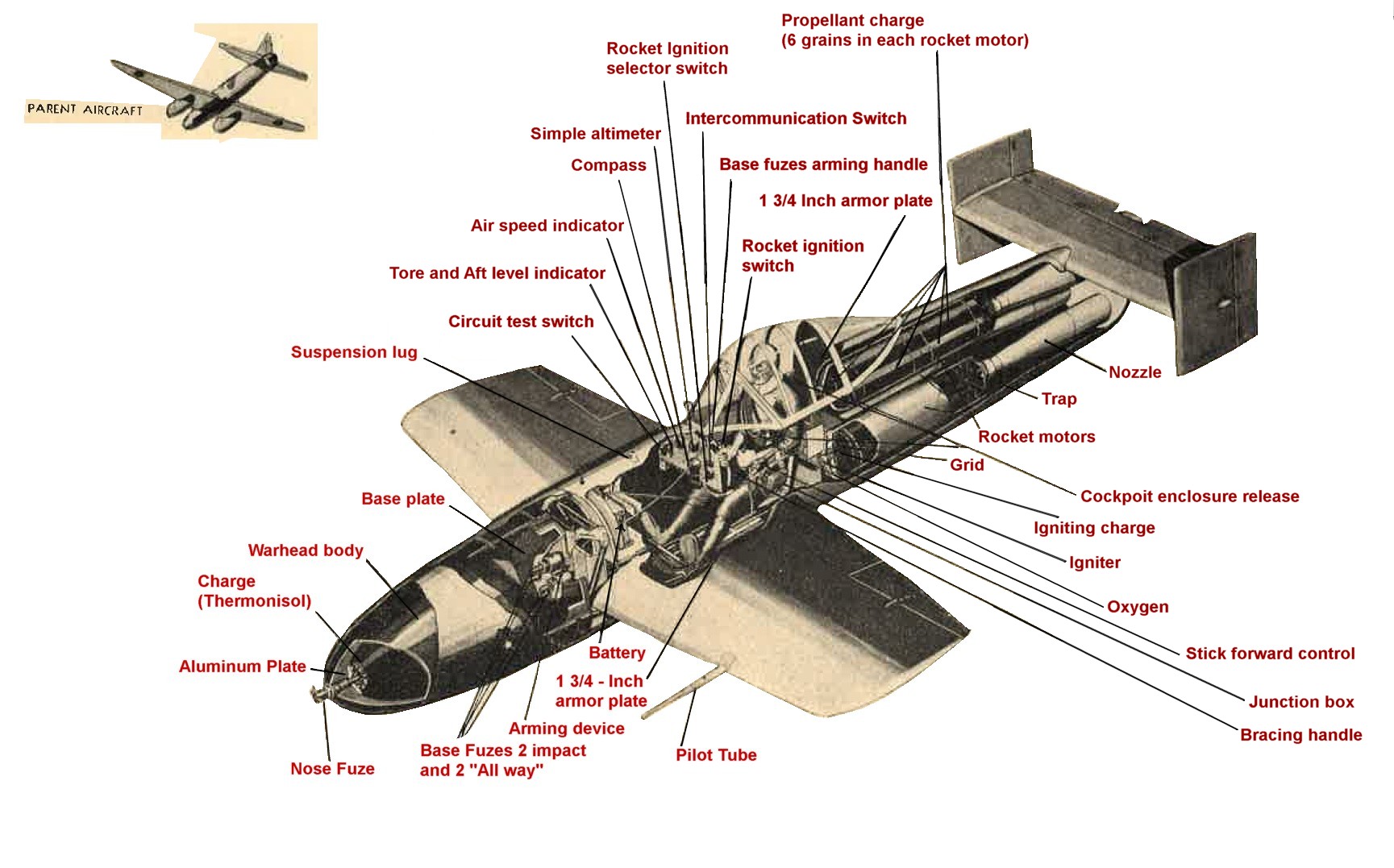
(2) Description. The missile is a low mid-wing, monoplane type with a narrow round fuselage and a prominent nose. The wings are stubby and moderately sept back. A flat rectangular tailplane is mounted on top and to the rear of the fuselage. The missile has twin square fins with rudders. The pilot's cockpit is located behind the trailing edge of the wing.
The three main rocket units are located in the rear section of the fuselage. Some of the Bakas have a mounting under each wing for a rocket unit. The warhead is located in the nose section.
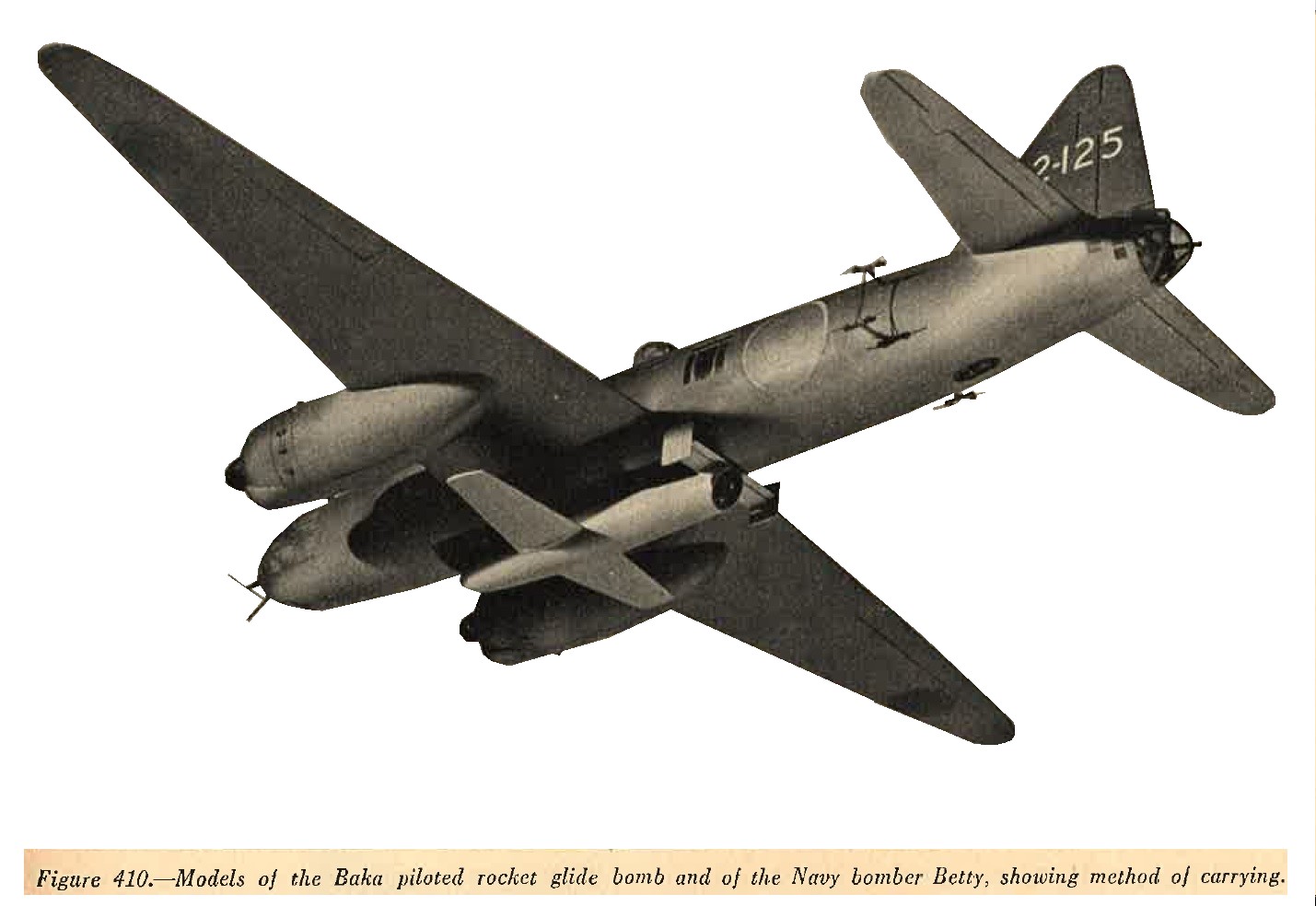 |
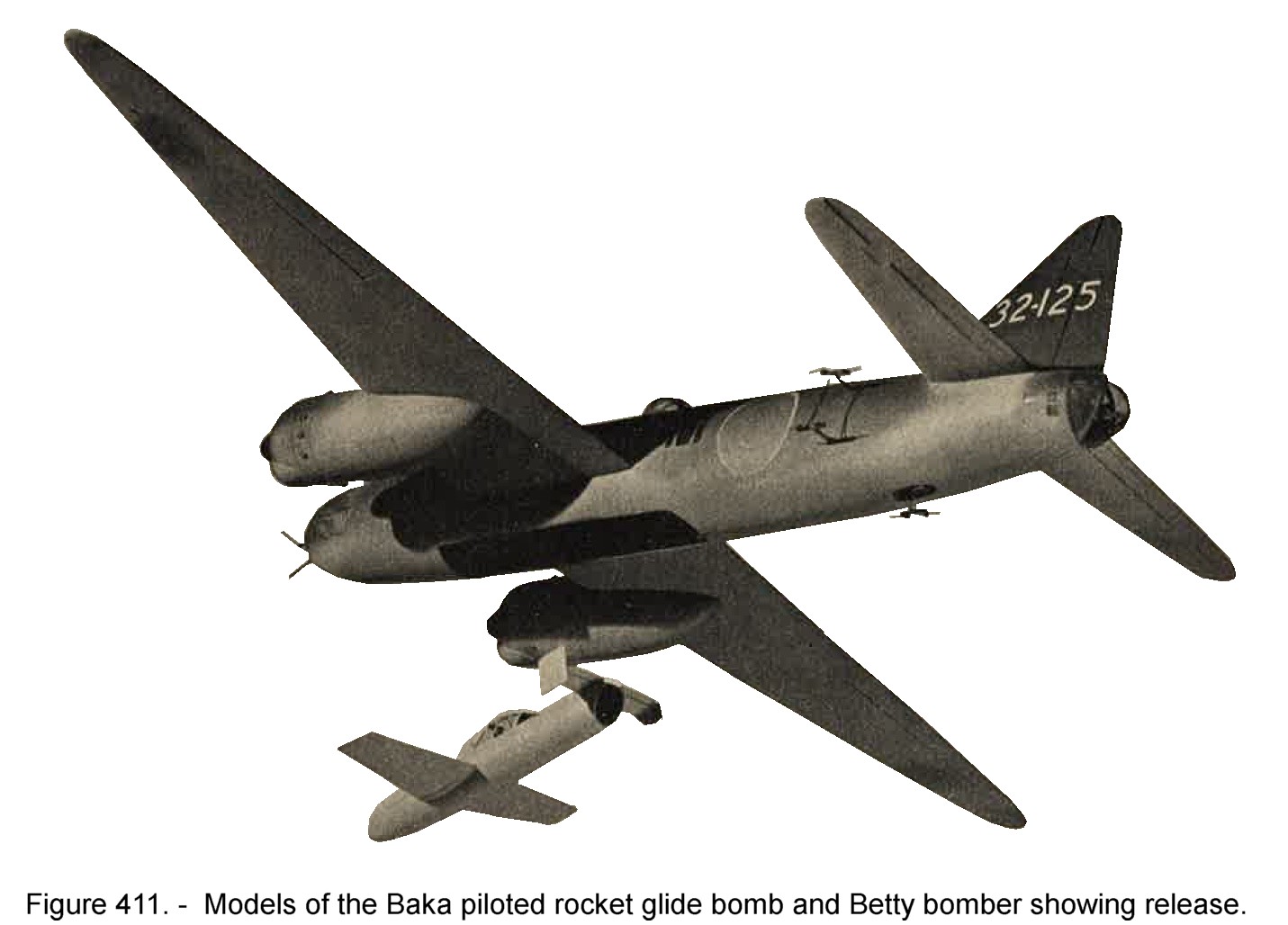 |
(3) Launching and performance. the actual operational use of this missile has been confirmed by action photographs of a Betty aircraft carrying the bomb underneath its fuselage as shown in Figure 411.
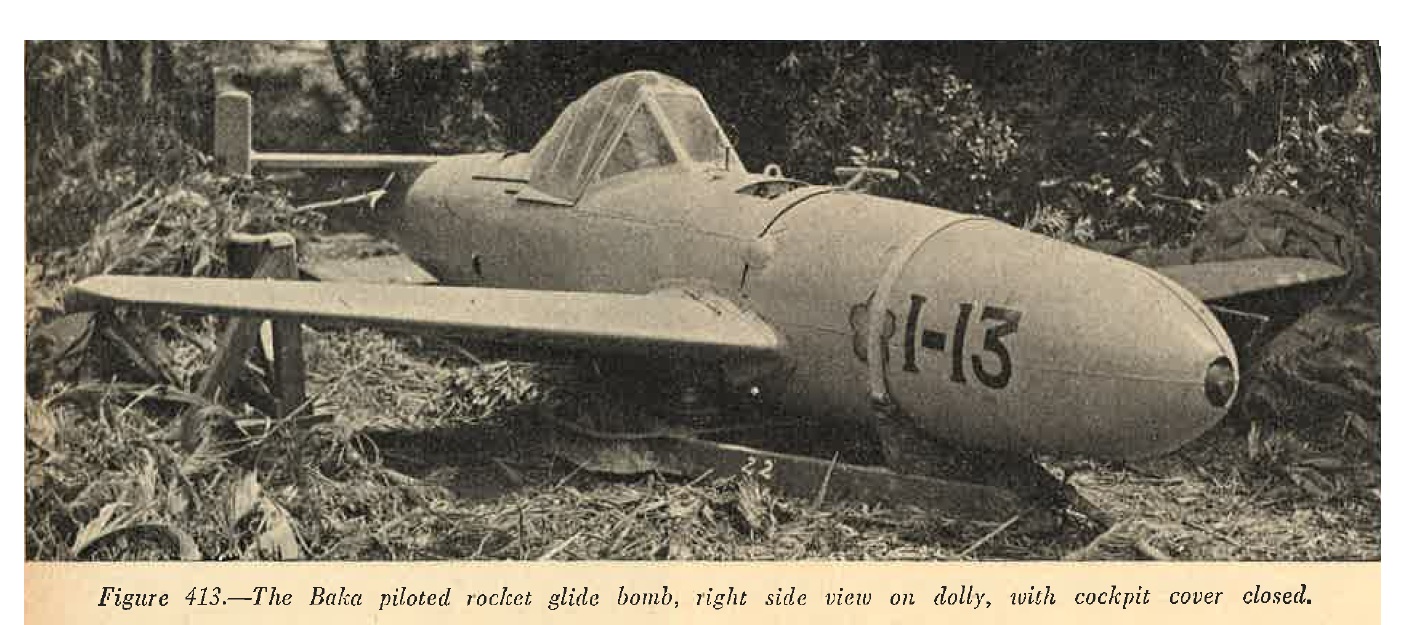 |
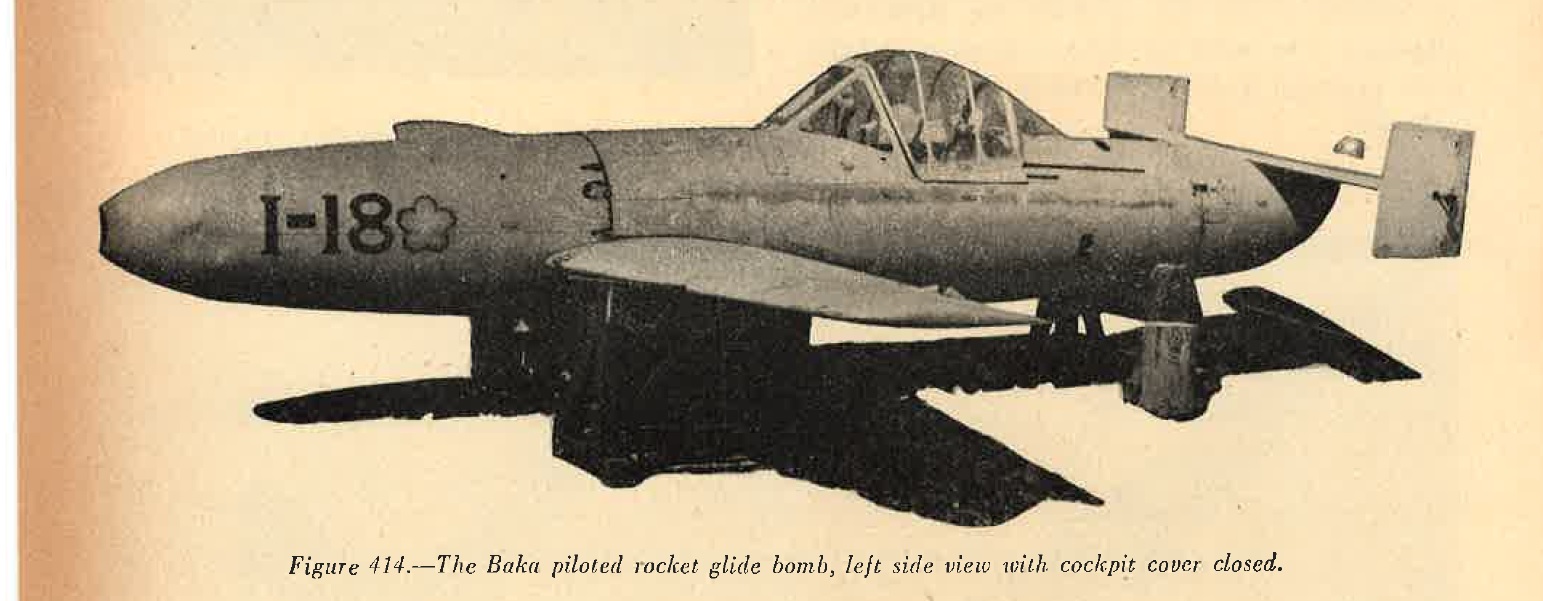 |
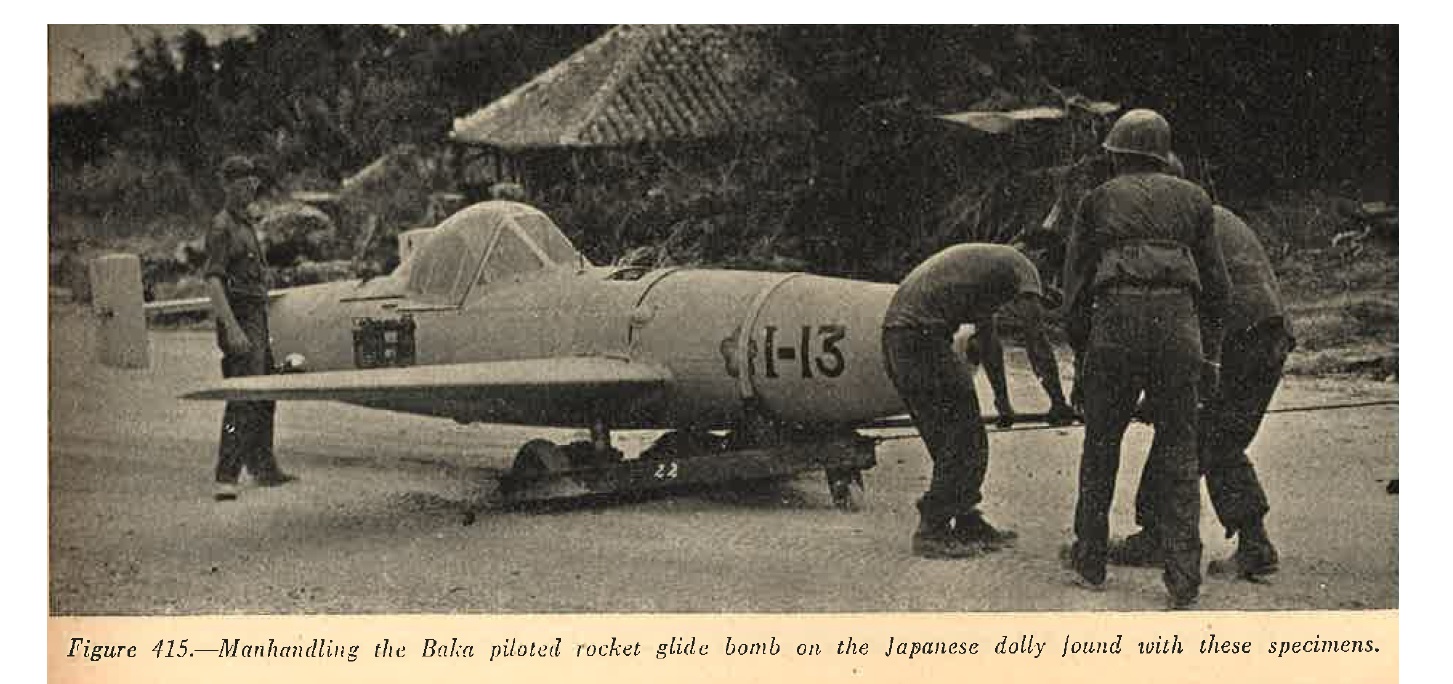 |
Peggy 1, Helen 2, Sally 2, Frances 11, adn Rita 11 aircraft would also be satisfactory launchers. The maximum theoratical range of Baka when launched from 27,000 feet is calculated to be 55 miles.
